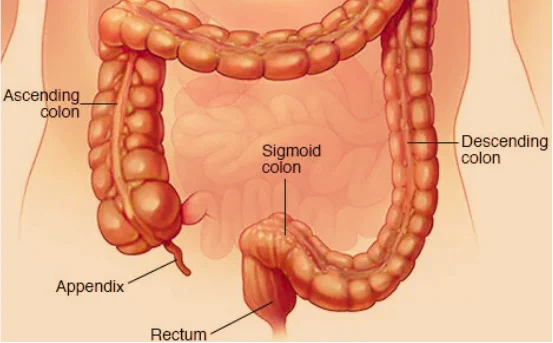Colectomy is a surgical procedure involving the removal of all or part of the colon (large intestine). It is commonly performed to treat various colon related conditions such as colon cancer, diverticulitis, inflammatory bowel disease (IBD), bowel obstruction, and in some cases, severe constipation. Understanding the different types of colectomy is essential for patients who are exploring surgical treatment options and want to make informed decisions with their healthcare providers.
Colectomy is not a one size fits all surgery. There are different types of colectomy procedures, each tailored to target specific areas of the colon and address various medical concerns. Whether the goal is to treat cancer, relieve chronic inflammation, or prevent future complications in high risk patients, understanding the types of colectomy and what each entails is essential for making informed healthcare decisions.
What is Colectomy?
A colectomy is a major surgical operation that involves removing a portion or the entire colon. Depending on the condition being treated, the surgeon may remove a specific section of the colon or, in more severe cases, the entire colon. The procedure can be performed using traditional open surgery or minimally invasive laparoscopic techniques.
The main goal of a colectomy is to eliminate diseased or damaged sections of the colon and restore digestive function. In some cases, it may also involve creating a stoma (an opening in the abdomen for waste elimination) if reconnection of the bowel is not immediately possible.
Why is Colectomy Performed?
A colectomy may be recommended for various medical conditions, including
-
Colon cancer
-
Crohn’s disease
-
Ulcerative colitis
-
Diverticulitis
-
Bowel obstruction
-
Gastrointestinal bleeding
-
Precancerous polyps (inherited conditions like FAP)
The decision to proceed with surgery usually depends on the severity of the condition, the patient’s overall health, and whether other treatment options have been exhausted.
Major Types of Colectomy
There are several types of colectomy, each classified based on which part of the colon is removed. Below are the most common types
-
Total Colectomy :- In a total colectomy, the entire colon is removed. This procedure is typically performed for patients with widespread colon disease, such as severe ulcerative colitis or familial adenomatous polyposis (FAP). Since the entire colon is taken out, the surgeon must either connect the small intestine to the rectum or create an ileostomy (an external stoma).
Total colectomy can significantly improve quality of life in patients with chronic and debilitating colon diseases, although it often requires lifestyle adjustments after surgery.
-
Partial Colectomy (Segmental Colectomy) :- Partial colectomy involves removing only the diseased portion of the colon, with the remaining healthy ends being reconnected. It is also called segmental colectomy because only a specific segment of the colon is excised.
This type of colectomy is commonly used for treating colon cancer or diverticulitis confined to a particular area. Recovery may be faster compared to a total colectomy, and bowel function can often return to near-normal levels.
-
Hemicolectomy :- A hemicolectomy refers to the removal of either the right or left half of the colon, depending on the disease’s location.
-
Right Hemicolectomy :- Involves removing the ascending colon and sometimes a portion of the transverse colon. This is often done for cancers or conditions affecting the right side of the colon.
-
Left Hemicolectomy :- Involves removing the descending colon and part of the transverse colon. It is commonly performed for conditions affecting the left side of the colon.
After the affected portion is removed, the remaining ends of the bowel are rejoined in a procedure known as anastomosis.
-
-
Proctocolectomy :- Proctocolectomy involves removing both the colon and the rectum. This is usually recommended in cases of severe ulcerative colitis or inherited disorders like FAP, especially when there is a high risk of cancer.
In many cases, a proctocolectomy is followed by the creation of an ileal pouch anal anastomosis (IPAA), also called a J-pouch. This allows patients to retain some control over bowel movements instead of relying on a permanent ileostomy bag.
-
Subtotal Colectomy :- In a subtotal colectomy, most of the colon is removed, but the rectum is left intact. This approach is used in cases where colon disease is widespread but the rectum is still functioning normally.
It’s a middle ground option that preserves part of the digestive tract and may avoid the need for a permanent stoma, depending on the patient’s condition.
Open vs. Laparoscopic Colectomy
Modern colectomies can be performed through two main techniques
-
Open Colectomy :- Involves a large abdominal incision. It offers direct access and may be necessary for complex or emergency cases.
-
Laparoscopic Colectomy :- A minimally invasive method using small incisions, a camera, and specialized instruments. It typically results in shorter hospital stays, less pain, and quicker recovery.
The choice of technique depends on the patient’s health, the nature of the disease, and the surgeon’s expertise.
Recovery After Colectomy
Recovery from a colectomy varies depending on the type of procedure performed and the individual patient’s overall health. Generally, patients can expect the following
-
Hospital stay of 3 to 7 days (may be longer for open surgery)
-
Gradual return to normal bowel movements
-
Temporary dietary restrictions
-
Wound healing and physical rest for several weeks
-
Possibility of temporary or permanent stoma care
Patients will need follow up care and may benefit from support groups, dietary counseling, and regular monitoring to ensure optimal recovery.
Risks and Complications
As with any major surgery, colectomy carries certain risks. These may include
-
Bleeding
-
Infection
-
Bowel leakage from the reconnected ends (anastomotic leak)
-
Blood clots
-
Damage to nearby organs
-
Prolonged bowel dysfunction
However, these risks can be minimized with proper preoperative assessment, skilled surgical technique, and attentive post-operative care.
Life After Colectomy
Many people go on to lead healthy and active lives after a colectomy. While some patients may experience changes in bowel habits, especially those with large portions of the colon removed, many can adapt over time. In cases involving an ostomy, proper training and support can help patients manage waste effectively and maintain a high quality of life.
The key to a successful outcome lies in working closely with your medical team, adhering to follow up care, and making necessary lifestyle changes.
Conclusion
Understanding the different types of colectomy can help patients feel more empowered when facing a colon related surgery. Whether it’s a partial colectomy for localized disease or a total colectomy for more severe conditions, each procedure is tailored to the individual’s needs and long term health outcomes.























